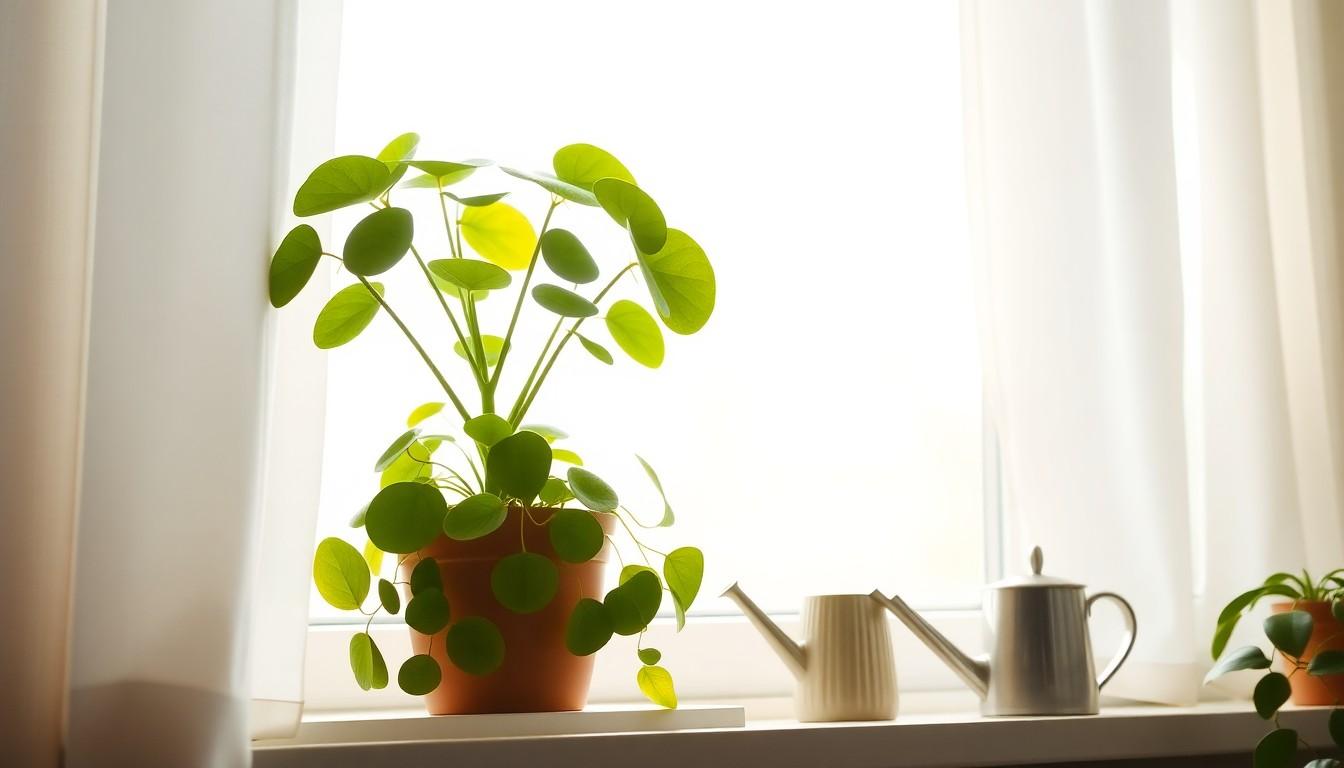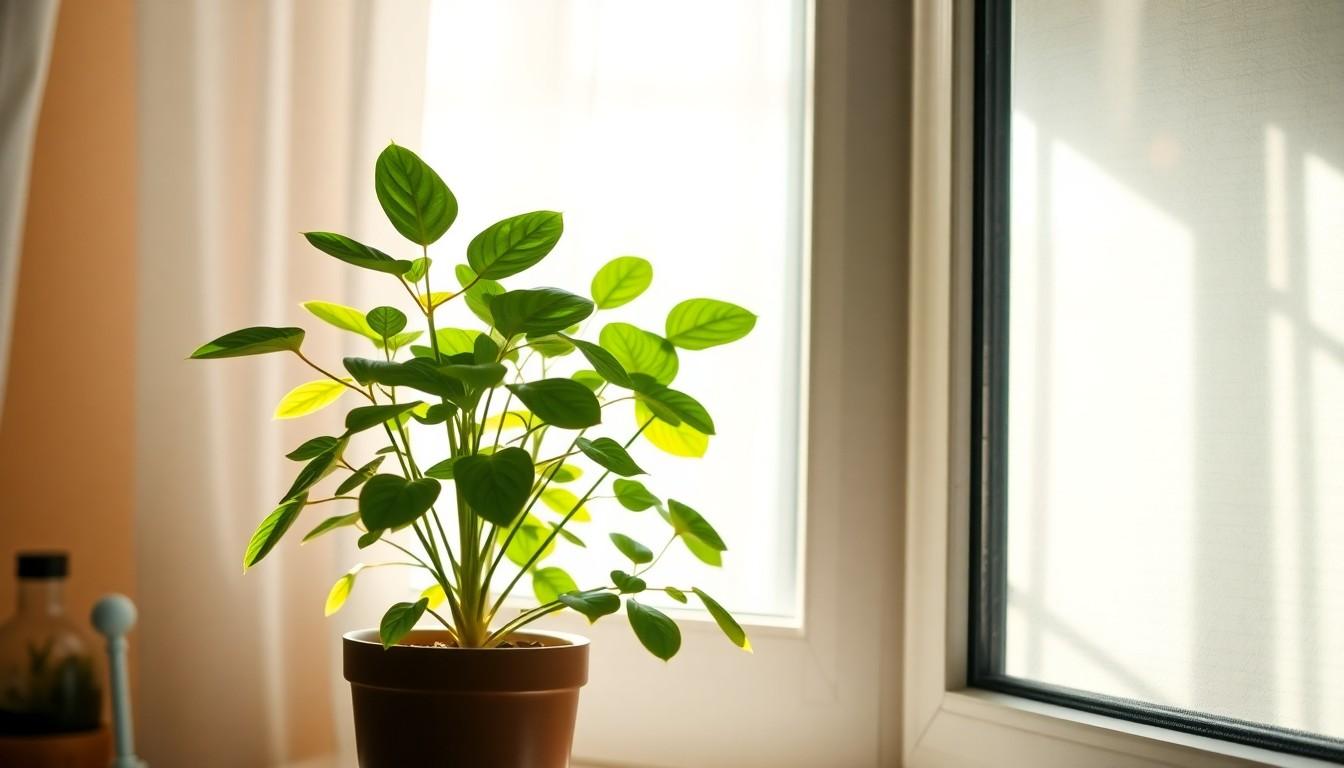Phone:
(701)814-6992
Physical address:
6296 Donnelly Plaza
Ratkeville, Bahamas.

If you think keeping a coin plant alive is as easy as tossing it a few coins and hoping for the best, think again! These charming little green wonders, also known as Pilea peperomioides, deserve more than just spare change. With their round, coin-like leaves and playful personality, they’re the perfect addition to any home. But don’t let their laid-back vibe fool you; they still need some TLC to thrive.
Coin plant care involves attention to light, water, soil, and humidity. Adequate light ensures healthy growth. Placing the coin plant in bright, indirect sunlight promotes optimal leaf development. Direct sunlight can scorch the leaves.
Watering practices play a crucial role. Soil should dry out between watering sessions. Overwatering leads to root rot, while underwatering causes drooping leaves. It’s essential to observe the plant’s condition and adjust watering frequency accordingly.
Soil type impacts overall wellness. A well-draining potting mix supports healthy roots. Using a mix formulated for houseplants often yields favorable results. Ensure the pot has drainage holes to prevent water accumulation.
Humidity affects the plant’s vitality. Coin plants thrive in humidity levels of 40% or higher. Regular misting or a pebble tray with water can enhance moisture in the air around the plant. Avoid placing the plant near heat sources that can dry out the environment.
Fertilizing also contributes to growth. Applying a balanced liquid fertilizer every four to six weeks during the growing season supports healthy foliage. Reducing or eliminating fertilization during the dormant months prevents nutrient buildup.
Pest control is essential for maintaining plant health. Regularly check for common pests such as spider mites and mealybugs. Treat infestations promptly to prevent damage. Thoroughly inspecting the undersides of leaves aids in early detection.
Understanding these care requirements ensures a thriving coin plant that adds beauty and vitality to any space.

Coin plants thrive under specific conditions that support their growth and vitality. Understanding these needs enhances their ability to flourish indoors.
Bright, indirect sunlight promotes healthy growth in coin plants. Placing them near a window protected by sheer curtains balances adequate light exposure. Too much direct sunlight may scorch their leaves, leading to damage. Observing the plant’s reaction to light helps determine if adjustments are needed. If leaves appear leggy or pale, increasing light exposure is beneficial.
Coin plants prefer temperatures between 65°F and 75°F (18°C to 24°C). These plants enjoy warmth but are sensitive to cold drafts, so placing them away from air conditioning or heating vents is crucial. Nighttime temperatures can fluctuate slightly, but avoiding extremes supports overall health. Maintaining stable temperatures prevents stress and encourages growth. Regularly checking for temperature consistency can help keep the plant thriving.
Proper watering and humidity significantly influence the health of a coin plant. These factors ensure the plant thrives and maintains its vibrant appearance.
Watering requires attention to the plant’s needs. It’s best to allow the top inch of soil to dry out between watering sessions. Observe the leaves; drooping or yellowing may indicate overwatering. Conversely, if leaves appear crispy, the plant likely needs water. Pour water directly onto the soil, avoiding the leaves to prevent fungal issues. Adjust the watering frequency during different seasons, with summer requiring more frequent watering than winter. Always use well-draining potting soil to prevent water retention, which may cause root rot.
Ideal humidity for coin plants ranges from 40% to 60%. A higher humidity level promotes lush growth and vibrant leaves. Low humidity can lead to leaf drop and sluggish growth. Consider using a humidifier or placing the plant on a pebble tray filled with water to increase moisture. Regular misting can enhance humidity but avoid saturating the leaves. Checking humidity levels with a hygrometer provides a precise measure. Maintaining consistent humidity contributes greatly to overall plant health and vitality.
Proper soil and fertilization are crucial for the health of coin plants. Selecting the right soil type ensures that the plant receives adequate drainage and nutrients.
A well-draining potting mix is essential for a coin plant’s health. Consider using a blend designed for houseplants, which typically includes peat moss, pine bark, and perlite. This combination provides necessary aeration and drainage. Soil that retains too much moisture can lead to root rot, so always check for drainage holes in the pot. Additionally, a tropical plant mix, enriched with nutrients, can support growth and vigour. For optimal conditions, aim for a pH level between 6.0 and 6.5.
Fertilization should occur every four to six weeks during the growing season. Balanced liquid fertilizers work best for coin plants, promoting robust growth. It’s advisable to dilute the fertilizer to half-strength to prevent over-fertilization, which can damage roots. Additionally, applying fertilizer during the active growing months of spring and summer ensures the plant receives necessary nutrients. Monitoring the plant’s response to fertilization allows for better adjustments, while those in lower-light conditions may require less frequent feeding.
Coin plants can face several challenges that affect their health. Addressing these issues promptly ensures the plant continues to thrive.
Pests like spider mites and mealybugs pose significant threats to coin plants. Inspect the leaves regularly for signs of infestation, such as webbing or cotton-like masses. If detected, wiping the leaves with a damp cloth often removes these pests. In severe cases, applying insecticidal soap or neem oil provides effective treatment. Regularly misting the leaves also discourages pest populations by maintaining humidity, making the environment less hospitable for them. Keeping the plant healthy through proper care minimizes the risk of pest problems.
Coin plants may contract diseases that stem from poor care or environmental stress. Root rot often emerges from overwatering or poorly draining soil, leading to yellowing leaves and mushy roots. Allowing the top inch of soil to dry out before watering helps prevent this issue. Leaf spot diseases can develop due to high humidity levels and overcrowded foliage. Air circulation around the plant promotes drying of excess moisture, reducing disease risk. If leaf spots appear, cutting affected leaves promptly prevents further spread. Identifying these issues early enables effective management and recovery of the plant’s health.
Caring for a coin plant can be a rewarding experience when the right conditions are met. By providing bright, indirect sunlight and maintaining appropriate humidity levels, plant owners can create an ideal environment for growth. Regular watering practices and the use of a well-draining potting mix are essential to prevent issues like root rot.
Keeping a close eye on the plant for pests and adjusting fertilization based on its needs will further ensure its health. With a little attention and care, the coin plant can thrive and bring a touch of charm to any space.